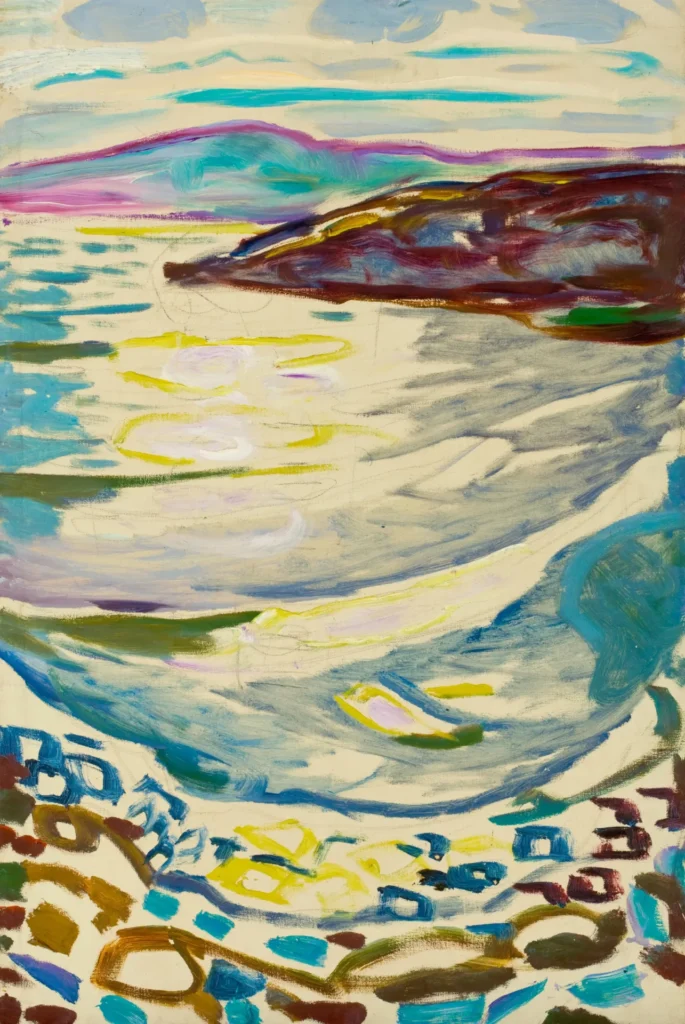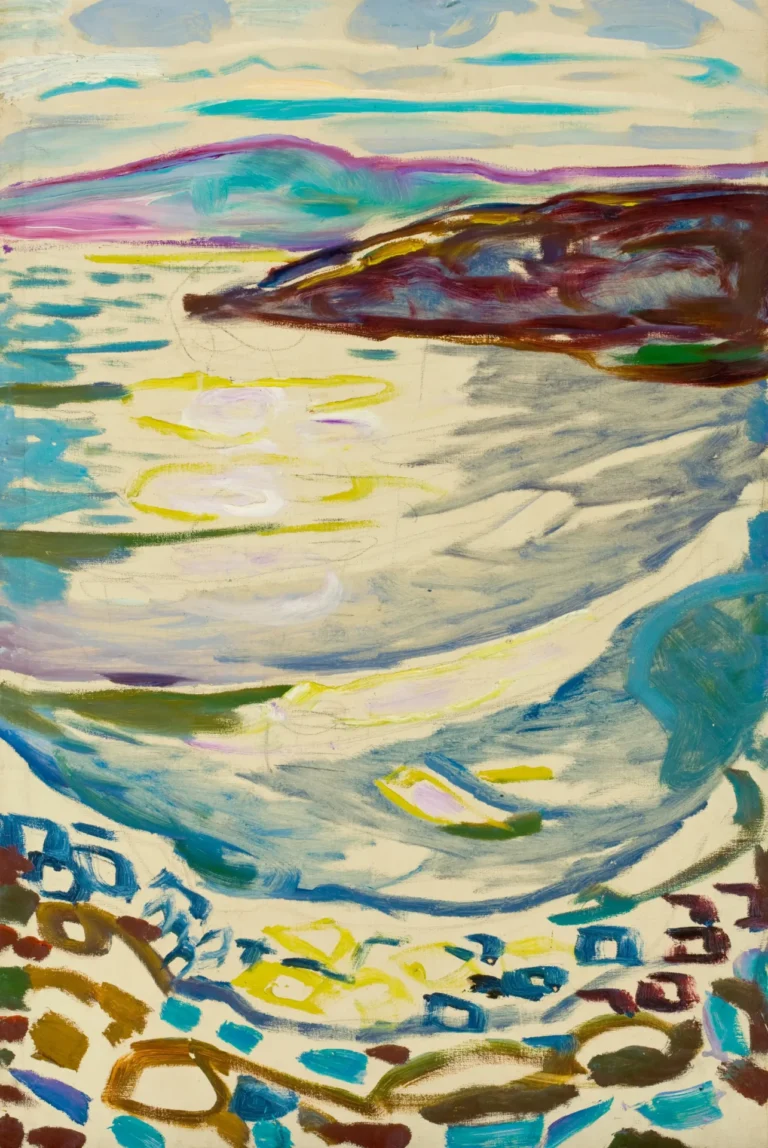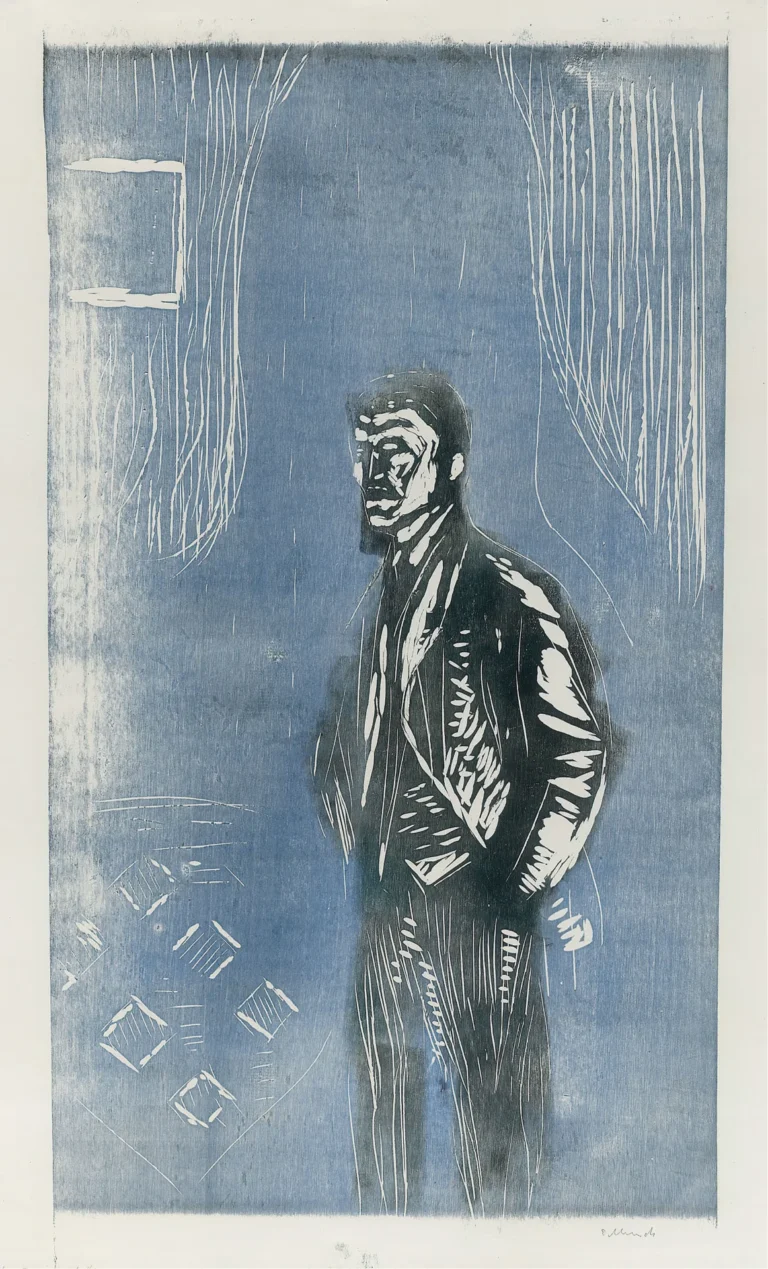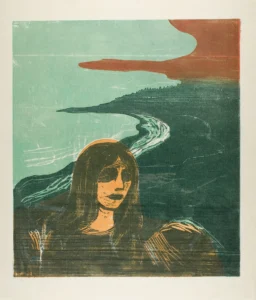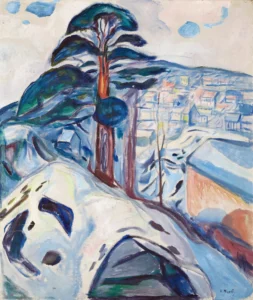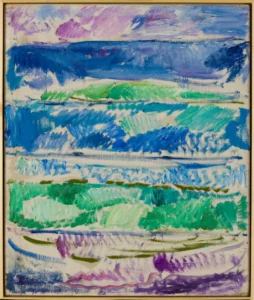Landscape from Hvitsten (1918–1919)
Fjordlandskap (Fjord Landscape) is a remarkable painting by Edvard Munch crafted circa 1918, depicting the serene shoreline at Hvitsten. This work beautifully captures the lush greenery and deep blues of the Oslo Fjord, displaying Munch's exceptional use of color and expressive brushwork. The summer foliage bursts forth in vibrant yellows and greens, highlighting the artist's profound connection to the nature surrounding him during his time at Nedre Ramme. Munch's focus on the life and vitality within the landscape illustrates his ongoing evolution as an artist during this serene chapter of his life.
Circa 1918
About the Artwork
The creation of Fjordlandskap occurred during a significant and peaceful period in Edvard Munch's life, as he resided in Hvitsten at his summer retreat, Nedre Ramme. This time, between 1918 and 1919, marked a departure from the tumultuous past that had characterized his earlier years. Here, Munch found solace in nature, away from the distractions of urban life. Surrounded by the enchanting beauty of the Oslo Fjord, he adopted a new artistic approach, focusing on capturing the vibrancy of the world around him. Munch's Fjordlandskap stands as a testament to his emotional resonance with the landscape; it reflects his evolving style characterized by a rich color palette and expressive brush strokes, showcasing growth and renewal.
Did You Know
During the years Munch spent in Hvitsten, he cultivated a deep emotional connection with the landscape, which greatly influenced his artistic output. His time there led to numerous works celebrating the natural beauty of the region.
The works created during this period, including *Fjordlandskap*, marked a pivotal shift in Munch’s artistic focus, embracing a vitalist style that emphasized the life force within nature, showcasing brightness and color as vital elements.
Nedre Ramme, Munch’s summer residence, provided him with tranquility and inspiration. The surrounding nature and serene environment facilitated a new creative burst, allowing him to experiment with fresh artistic expressions during a crucial time in his life.




